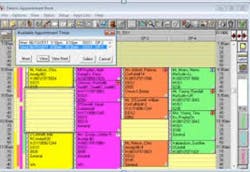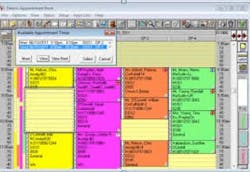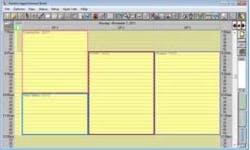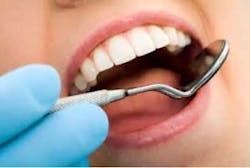Who is in charge of the schedule in your practice?
Scheduling in a dental office is often a big headache for everyone. We often hear, “Who put that patient on the schedule?” or “ We can’t see that patient at that time because…” Each member of the team views the schedule with a different agenda.
2. The assistants want to have time to turn the rooms, complete chart notes, and sneak in a quick trip to the restroom. Just when an assistant thinks she can take a breath in the breakroom, an emergency is slipped into the schedule. “There goes half my lunch hour,” she thinks. This is also not an efficient method.
3. The doctor wants the schedule to be free of holes and incredibly productive. To be quite honest, everyone would like a $10,000 schedule everyday, but only under his or her own terms. This is not always a practical method.
4. Hygiene is the only schedule that is relatively easy to maneuver, except when patients have to wait an extended period of time for a hygiene check. But that is an entirely different article.
I’d like to suggest a team approach to developing a scheduling system for your office. This means that the entire team gathers for a meeting, and it will usually take about an hour. The discussion should be about all the procedures that are performed on a routine basis, how much time each procedure typically takes, and who is needed at various times throughout the procedures. All the external variables should be taken into account as well. These are times that the doctor needs to step out of the operatory. Things such hygiene checks, post-op appointments, anesthetizing the next restorative patient, and anesthetizing a scaling and root planing patient.
The monkey wrench in any schedule is the emergency patient. I recommend that at each morning huddle, the assistant(s) specify a morning and afternoon time where the admin team can put a 30-minute emergency appointment. This takes the question out of equation. If a patient isn’t able to make the time allotted for emergency appointments, there is always tomorrow. If it’s a true emergency, the patient will be there.
A dental office has to have a systematic approach to the schedule. This will make the difference between feeling productive and organized, or feeling flustered, frustrated, and exhausted. By having everyone’s input, all aspects of the day can be reviewed and considered.
An interesting caveat to this subject happened to me recently. I made an appointment with Bruce at Deja Nails for a manicure. He asked if I wanted a pedicure too, and I said I didn’t have time for both. But I was thinking about how it’s time for sandals and I really needed a pedi. As though reading my mind, Bruce asked, “How about we do both at the same time?” Holly was not with a client and jumped in to do my pedi. Feeling like Queen Sheba, I had my hands and feet prepped, primped, and polished, all at the same time. I was chuckling to myself at how they had just doubled their production, just by being accommodating my needs. Kudos to them.
By working as a team, your office can have a productive schedule that can also be accommodating to your patients. It’s your schedule, and you should be in control of it – as a team.
Denise Ciardello is a professional speaker, published author, and cofounder of Global Team Solutions, a practice management consulting firm that brings clinical and administrative teams together through customized practice development and coaching. She is an expert in efficient business systems, and helping practices improve marketing results, professional image, and the bottom line. Her enthusiasm and knowledge for the dental profession has motivated many dental teams. Contact her at [email protected].




